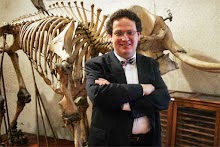Before the chestnut blight wiped out most mature American Chestnut trees in the eastern U.S., it was a conspicuous part of both forest ecosystems and life in America. The natural rot resistance, strength, and light weight (compared, for example, to oak) of its wood combined with the abundance of chestnut made it a favorite of farmers and many of the great barns were framed with it, and sides of drawers and modest country furniture made from it. Woodworkers today salvage and resaw beams from old barns for the joy of building things from the lumber with its mythical status from earlier times.
Dr. William A. Powell of SUNY College of Environmental Science and Forestry has been leading a visionary and exciting project to engineer a blight resistant chestnut that returns the tree to the American landscape and maintains as much of the original American Chestnut genetic integrity and diversity as possible. If you have not seen his TED talk, do yourself a favor and check it out: http://tedxtalks.ted.com/video/Reviving-the-American-forest-wi
Few entomologists in the U.S. have seen or would recognize on sight a ship-timber beetle. They are fascinating in a couple of ways. First, they have some unique anatomical structures unlike anything elsewhere in the animal kingdom. Males of most species have a "maxillary palp organ," a multi-branched structure growing asymmetrically from between the third and fourth segments of the palp that, when pumped full of haemolymph, swells to present a larger surface area than the entire head. Were that not impressive enough, females have special pouches in their egg-laying structure that nurtures spores of fungi that are used to innoculate eggs as they are laid. These beetles were the original cultivators of ambrosia fungi, long before bark beetles adopted a parallel symbiosis.
One ship-timber beetle, Melittomma sericeum, used to be so common that it was considered a pest in the U.S. and papers were written on its control into the 1920s. Today it is an extremely rare species and few have been collected for many, many years. Although I did my PhD on the family, I have only ever seen one alive in the field. Yet it was common and widespread, that is, before its preferred host, the American Chestnut, was struck by blight.
So as the holidays near and Nat King Cole singing Chestnuts Roasting on an Open Fire echoes through my head, I can smell the piping hot bags of nuts on a vender's cart on a snowy sidewalk in Manhattan and warmly imagine a future when American Chestnuts are the fruits being roasted, majestic mature trees a common sight in eastern forests, and Melittomma sericeum common enough to once again be a pest.
More of the story of this heroic effort to save a great tree species may be found at:
http://www.esf.edu/chestnut/ and saplings may be seen where they were planted at the New York Botanical Garden.


